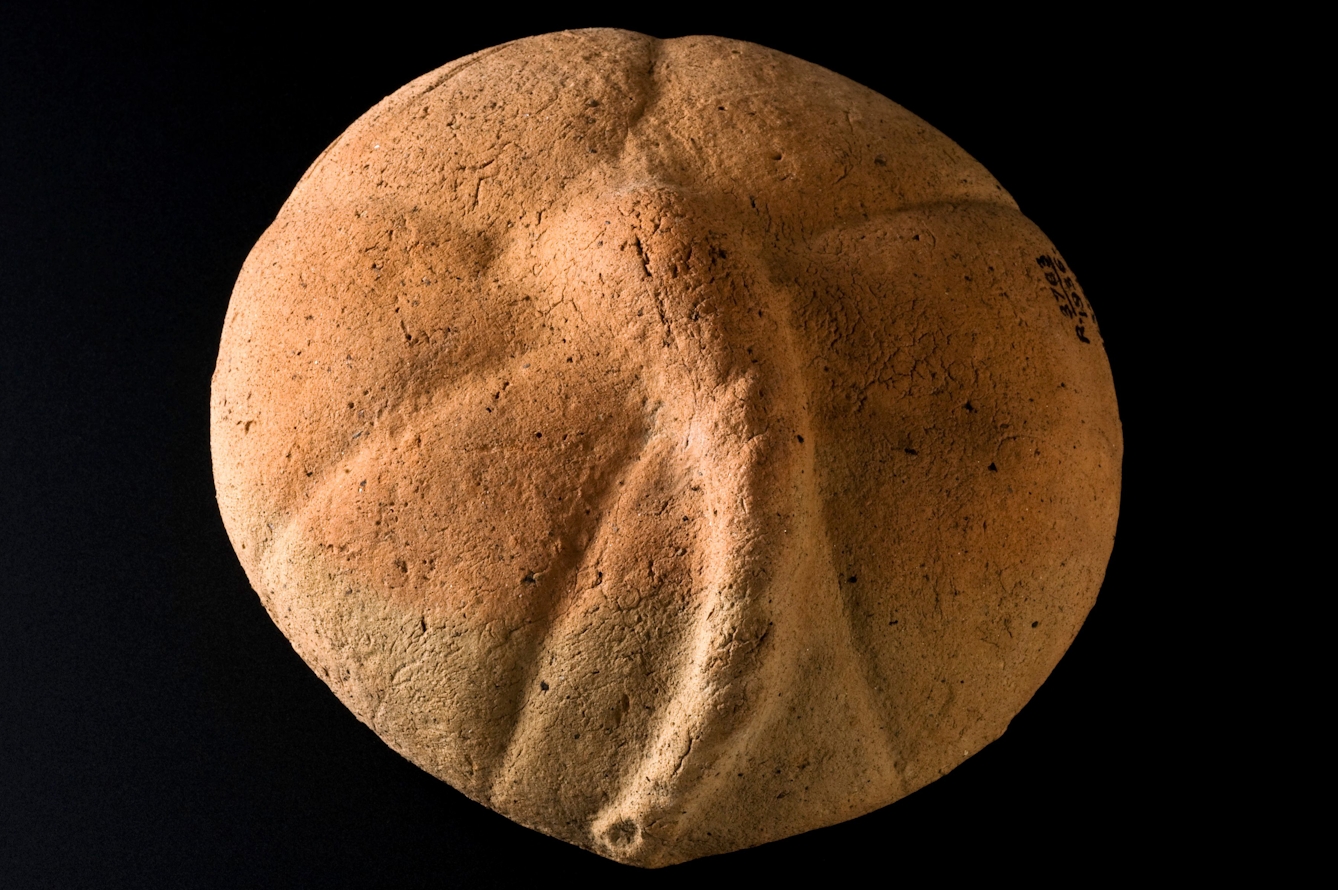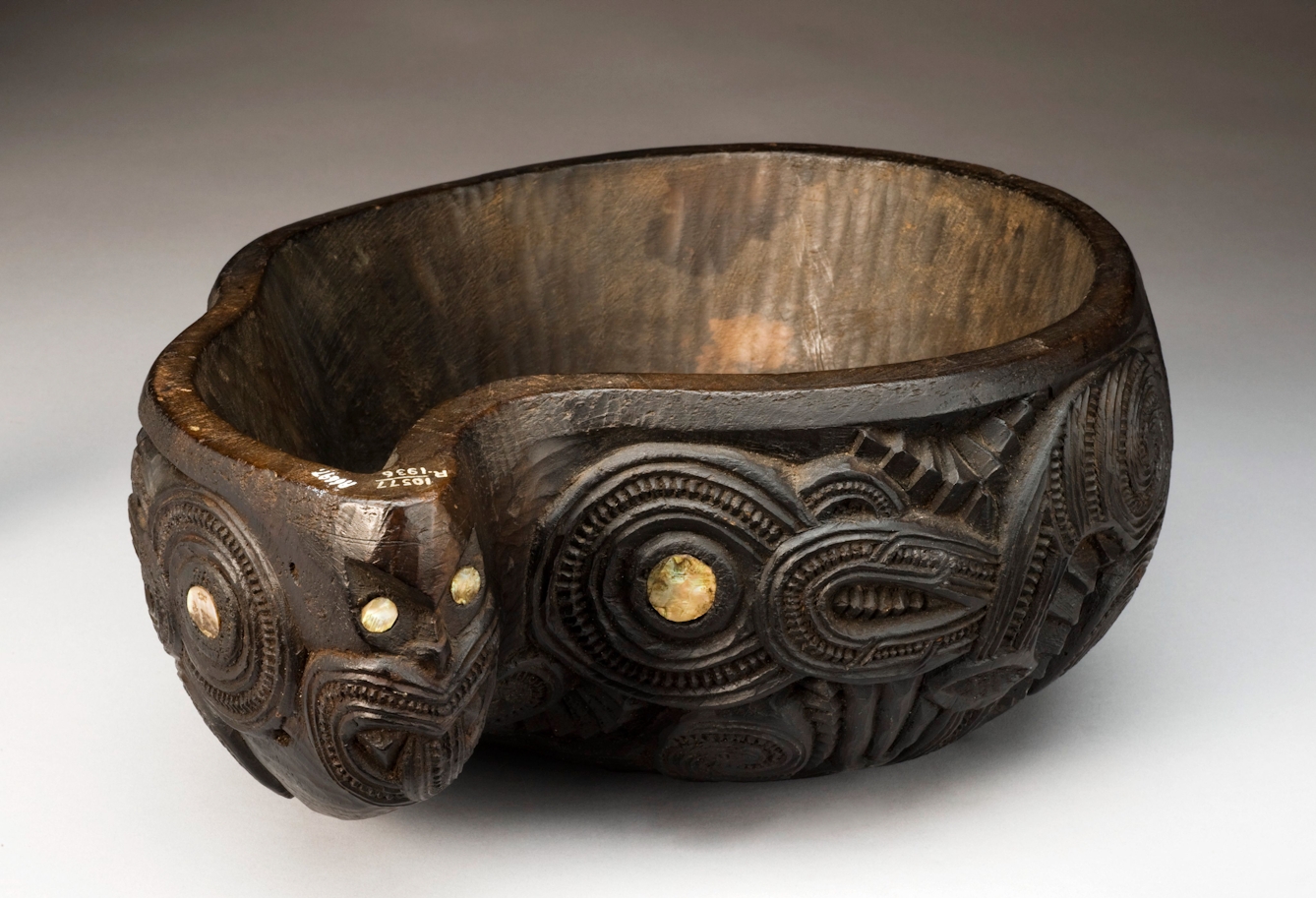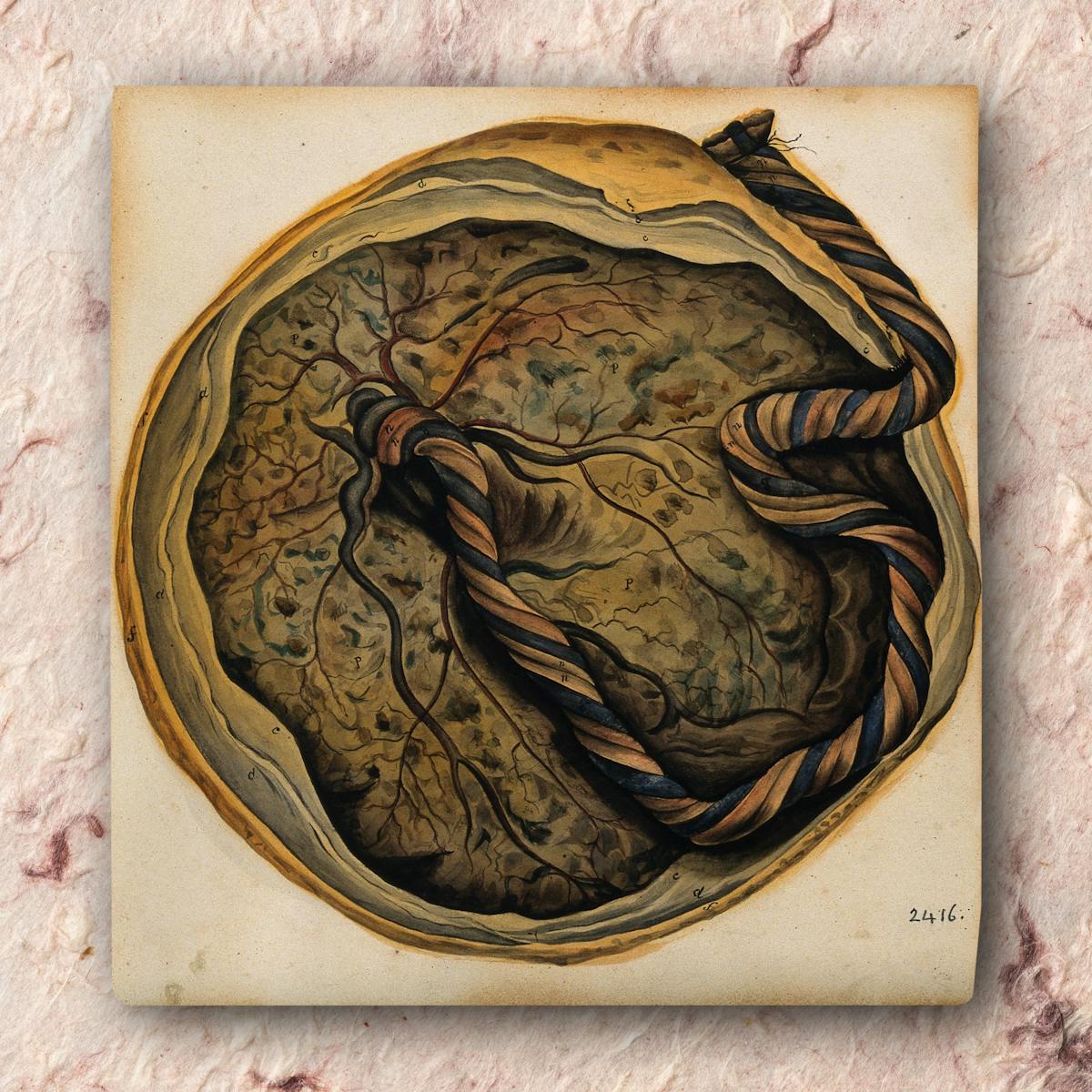Breast or formula milk is essential to the existence of a newborn baby – but it’s less well known that even as an embryo they’re dependent on a type of milk. Historian Joanna Wolfarth explores ancient beliefs about the role of the placenta, as well as recent research on uterine nourishment.
Holding my six-week-old baby close one evening, I whispered, “You are of me, but you are not me.” This was an expression of deep love. Yet it also felt surprisingly revelatory.
With these words, I had affirmed our interlaced yet distinct identities at a time when I was drowning under the pressures of new motherhood. The sea on which our raft rolled was made of milk, our life measured by night feeds and breast pumps, formula “top-ups” and weight charts.
Milk, I was sure, had replaced the umbilical cord in connecting me to my child. Without it, what would we become?
There were two things I hadn’t understood back then. The first was that milk had been there right from the very start, when my baby was nothing but abstraction and hope. Before even two blue lines appeared on a cheap pregnancy test, “womb milk” was being secreted from my uterine lining, providing my embryo’s first nourishment.
This womb milk would continue this job for the first 11 or so weeks, until the placenta and umbilical cord were developed enough to transport nutrients to the baby from my blood supply. Then this milk “dried up”, leaving the placenta as conduit between me and my child.
Months later, the placenta’s expulsion at birth triggered the production of more prolactin, the hormone responsible for producing breast milk. Then we began our slightly arduous yet magical breast- and bottle-feeding journey.
The role of the placenta
But I knew nothing of this womb milk, and not much more about the placenta. Given its physiological complexity, the placenta has long been something of an enigma.
From at least classical antiquity, the placenta was known to provide fetal nutrition, with the placenta directly connecting a mother and child’s circulatory systems. In this worldview, blood and milk were intimately connected; babies forming from menstrual blood, menstrual blood transforming into breast milk.
Yet knowledge about the placenta – as with breast milk – suffered by virtue of its status as a feminised organ within a philosophical system which views female bodies as messy, unruly and polluting.
As writer Siri Hustvedt explains, the placenta has always posed problems due to a “queasiness about the simple fact that everyone begins inside the body of someone else and is wholly dependent on that [feminised] body during pregnancy”.

“Milk, I was sure, had replaced the umbilical cord in connecting me to my child.”
Dr Carolyn Jones, an honorary research fellow in Developmental Biology and Medicine at the University of Manchester, tells me placental research did not have a high profile when she began her work in the early 1970s. But since then, the field has rapidly developed as the importance of the placenta as a crucial contributory factor in producing a healthy baby came to be appreciated.
In fact, researchers now understand that the placenta can also hold the key to lifelong health outcomes. The latest research suggests that the way the placenta develops might have an impact on the long-term risks of developing conditions such as heart disease and asthma.
A chimerical connection
The second unknown to me back then was that recent research into the human placenta has given Western thinkers new ways to conceptualise the maternal-fetal relationship. As Professor of Philosophy at the University of San Francisco Marjolein Oele writes, “The placenta brings into place the emergent realities of motherhood and child.”
We now know the placenta acts as a mediator and a porous border between two distinct bodies, connecting them but keeping them apart. This “transient, extracorporeal organ” performs the functions that are later taken on by the liver, lungs, kidneys and gut.
Recent research reveals the placenta is also generative: it does not simply transport nutrients, but also produces nutrients, enzymes, hormones and cytokines. The placenta is stubbornly independent, it contains no nerve cells and makes no connection with the brain.
The placenta is also a chimera, a single organism made from cells containing more than one set of DNA. Just like our child, the placenta contained DNA from both parents, both having been created from the blastocyst that formed when sperm fertilised egg. (In Greek mythology, the chimera is a fire-breathing she-monster, feared for being made of incongruous animal parts.)
Protective rituals
The postpartum value of the placenta is often high. Throughout history, medicinal potions were often made from placentas, often used to aid difficult births.
Romans offered their gods terracotta placenta votives in the hopes of a safe childbirth. Until the emergence of biomedicalised birth practices in Europe, the placenta was often buried with a tree planted above it, usually by the father. The health of the plant predicted the health of the child.
While some parents still do this, others offer their consent to donate their placentas, as the stem-cell-rich cord blood can be used in treating cancers, genetic conditions and immune deficiencies. In other cases, the placenta is discarded along with the other bodily ‘waste’ of birth.
Yet around the world, different cultures’ treatment of the placenta signifies a deep knowledge of it being something integral to, but distinct from, the mother and child.
Throughout history, medicinal potions were often made from placentas, often used to aid difficult births.
In 2010, medical anthropologists conducted a cross-cultural survey of 179 human societies and found 169 different methods of disposing of a placenta. Of these, some 61 per cent of methods suggested a connection between the placenta and some supernatural magical influence.

“Romans offered their gods terracotta placenta votives in the hopes of a safe childbirth.”
In Myanmar, it is buried with uncooked rice, salt and tamarind in a place where no one will walk over it, as harm to the placenta could lead to the baby becoming ill.
In some communities in Malaysia, the placenta will be washed with preserving lime juice, salt and tamarind, wrapped in white cloth and buried under a young palm tree; partial funerary rites which reflect the ‘semi-human’ status of the placenta.
In Northern Thailand, Ban Nong Tao Pgak’yau parents place the placenta within a bamboo tube, which is tied to a tree as a reminder of the physical connection between humans and the natural world.
In some Indigenous South American communities, the placenta is believed to have its own spirit distinct from that of the mother or child.
In Sri Lanka, the placenta might be hung on a fig tree in order to stimulate the mother’s milk production. Such small rituals may assuage the anxieties that can come with labour, birth and new parenthood.
The Hmong people of East and Southeast Asia use the same word for placenta as they do ‘jacket’, as the organ is considered the child’s first clothing. Yet, rather than a garment to be discarded, the placenta comes back into significance at the end of a person’s life, as a funerary ritual guides the soul to retrace their steps back to their place of birth to retrieve the ‘jacket’. They wear this garment back to the land of their ancestors.
The placenta can also connect the child to their home. In many cultures, the placenta is tied to the land; Maoris use the same word for both placenta and land: whenua.
Coming home to the body
All this is to say that recent ‘scientific’ discoveries are now catching up with the notion of the placenta as being independent of – but inextricably tied to – the mother and child, with its own generative potential. A mirror between parent and child, always somewhere in between.
For this reason, feminist theorists have turned to the placenta as a way of thinking differently about the maternal experience. The placenta’s intricate connection between the maternal and fetal bodies provide a way of exploring issues related to embodied experiences of pregnancy.

“In many cultures, the placenta is tied to the land; Maoris use the same word for both placenta and land: whenua.”
Knowing how the placenta functions as an in-between organ allowed me to remember that my newborn baby and I were intimately linked, yet separate. The placenta is a mediator with relative autonomy which, as Luce Irigaray writes, “establishes a relationship between mother and foetus” that mitigates against fusion.
But there is symbolic and philosophical potential too. The placenta collapses our deeply embedded cultural ideas over boundaries between self and other, by being neither mother nor child.
Maria Fannin, Professor of Human Geography at University of Bristol, uses placental relations as a basis for her ethics, with the organ offering “a productive material site for tracking this blurring of the concepts and categories that ground ethical and political thinking”. This offers a profoundly radical way to consider the possibility that we are not self-contained individuals, but that instead the boundaries between ourselves and other forms of life might be more porous and interdependent.
In wealthier countries today, it seems as if there has been an embracing of the placenta, evidenced by the rise in maternal placentophagy, the practice of the birth parent consuming the placenta, sometimes in an effort to boost milk supplies or improve mental wellbeing.
Although there are no large-scale studies to support these claims – and some studies suggest there might be risks associated with eating the placenta – what these new rituals indicate is that birthing parents are open to coming home to their bodies, in all their messy complexity.
This takes me back to ways to tend to the placenta that don’t involve consumption or disposal. If I were to birth again, perhaps I’d offer the placenta back to the Earth in a symbolic act affirming me and my baby’s connection to the world around us. To say: this is our home and our community, and we demand that that new caregivers are provided with better perinatal support and recognition.
About the author
Joanna Wolfarth
Dr Joanna Wolfarth is an art historian and writer. Formerly Visiting Lecturer in Southeast Asian Arts at SOAS, University of London, she now teaches Global Art History at the Open University, UK. A specialist in the cultural history of Cambodia, she writes widely on art, gender and cultural histories. Her first book, ‘MILK’, on the messy poetics and politics of breast milk and motherhood, is out now.

